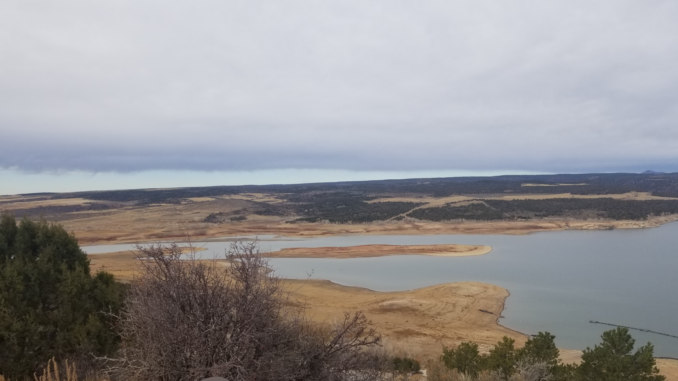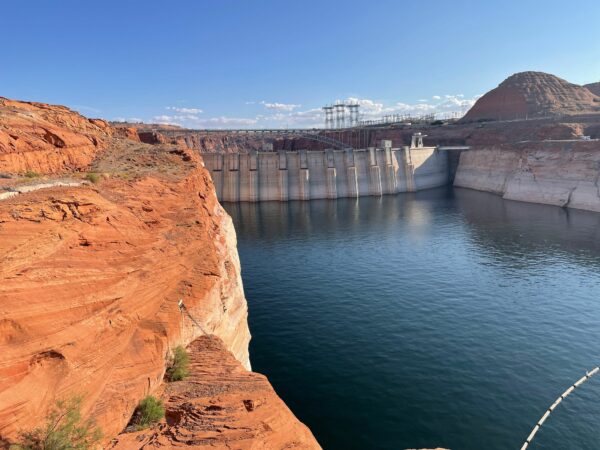
Jonson Kuhn | North Forty News
It’s beginning to look a lot like Christmas…with the exception of snow, of course. I know, I know, we’ve seen a little snow so far, some parts of the state more than others, but it’s been minimal at best and it’s certainly not as though we didn’t see it coming. These warming conditions are becoming so persistent that experts can actually predict it months in advance, they just can’t, unfortunately, do much about it in the way of preventing it from happening.
Peter Goble, a climatologist with the Colorado Climate Center at Colorado State University, was able to explain that much of the predictions being made regarding warmer temperatures for this winter revolved around the evidence that we were headed towards a second “La Nina” year, which according to Peter, has very much come to fruition.
“One of the big reasons we expected it to be dryer than normal is our fall season is typically wetter during El Nino or neutral years and dryer during La Nina and it looked like it was going to be a second-year La Nina; we had one last year and it looked like it was going to repeat, which it has. That second-year piece is key because the last two times that we’ve had these double-dip La Nina years where it comes back a second year in a row have been really dry falls and early winters across much of the central portion of the US, including Colorado, and really only wet in the northwest and northeast corners.”
With so much of the entire planet experiencing an increase in overall warmth, you’re not alone in asking just what exactly happened or is happening altogether. It’s easy enough to assume global warming is caused solely by people, but then that would suggest there’s still something we could do about it…but is there? Peter says there’s certainly no denying the contribution people have made to speeding the process up, but to a large extent, the planet appears to be getting hotter regardless of anything people do at this point.
“When it comes to the entire globe, research shows pretty clearly that trend (of global warming) is largely to do with human activities. Now when it comes to the precipitation deficit that we’ve faced in the Southwest US over the last couple of decades, I think a lot of that is natural variabilities.”
Lakes and reservoirs all throughout the state are experiencing record low numbers. It’s not, however, just a matter of having a lack of precipitation; we could have torrential snowfall followed by a tremendously wet spring but still be below expected water levels by the summer simply because temperatures are so hot that whatever water we do get is long evaporated into extremely dry soil before it even reaches the riverbeds.

Riverbeds much like that of the ever-so-popular Colorado River, which has been supplying 7 different states with water through the Colorado River Compact for the last 100 years. According to an article published by Colorado Public Radio last month, the flow of the Colorado River has dropped 20 percent since the 1990s and according to Brad Udall, a senior water and climate scientist at Colorado State University’s Colorado Water Institute, we can attribute half of the percentage drop to natural climate change.
“It really hasn’t been a ‘drought’ since the year 2000, it’s something else. You can call it a megadrought, a bunch of us are now calling it the aridification of the American west, the long-term warming, and drying. Because of these ever-increasing temperatures, soils are drying out, snowpack runs off earlier in the year, we have these big forest fires and areas may not have it regenerated because of climate change, so yeah, this is not just overuse or additional use of water, this is really a strong climate change signal.”
Despite increasing temperatures and little to seemingly do about any of it, Brad still maintains that conservation is the name of the game. Though the news is certainly a cause for concern, Brad suggests, “no one should discount our ability to conserve water; there’s still a lot of room for growth in that area. I think the action items here really start with conservation; trying to use less water and trying to model less water use for others in your community.”
Support Northern Colorado Journalism
Show your support for North Forty News by helping us produce more content. It's a kind and simple gesture that will help us continue to bring more content to you.
BONUS - Donors get a link in their receipt to sign up for our once-per-week instant text messaging alert. Get your e-copy of North Forty News the moment it is released!
Click to Donate
